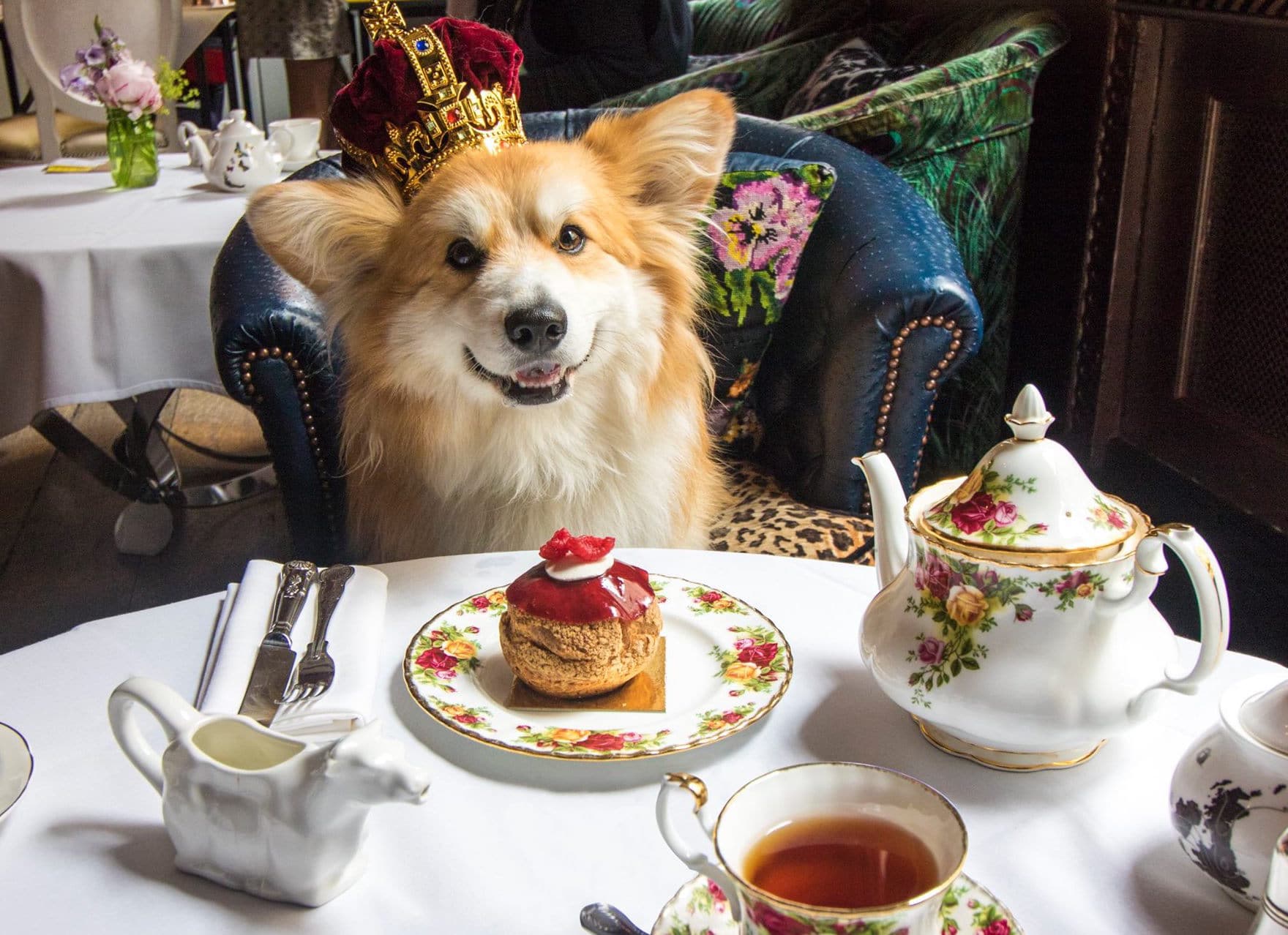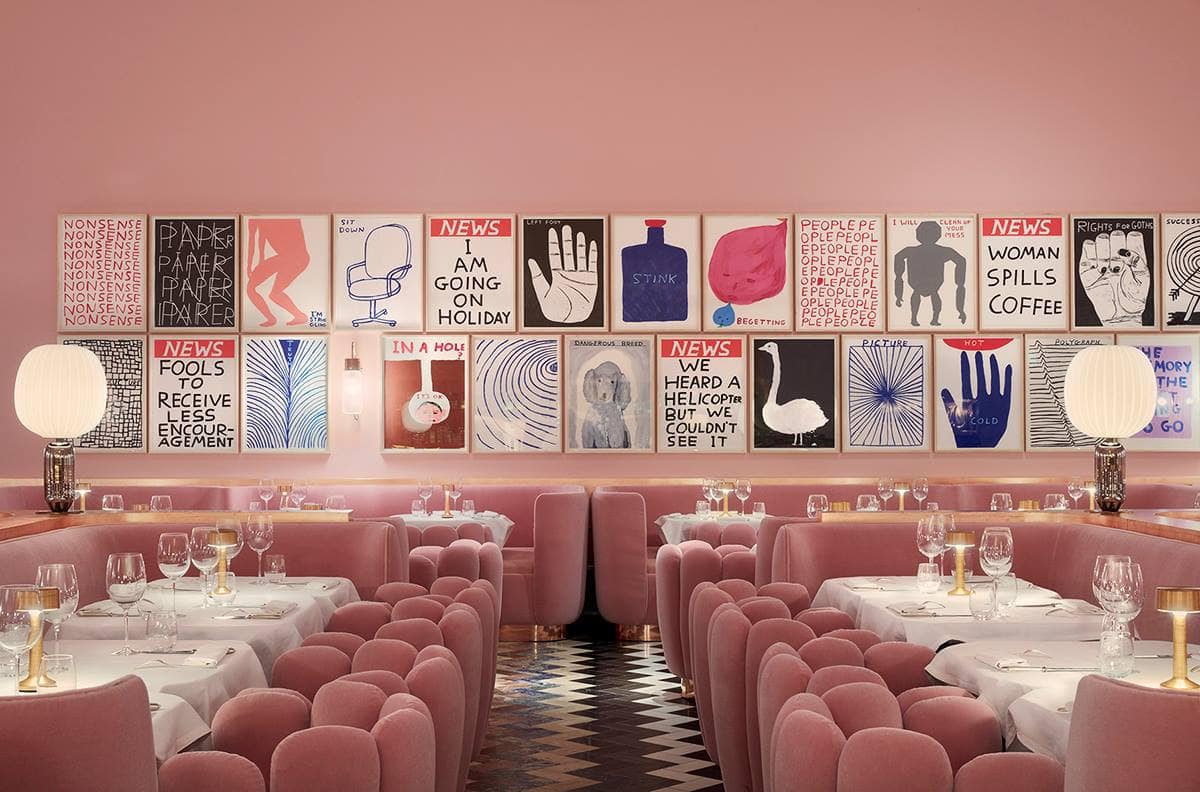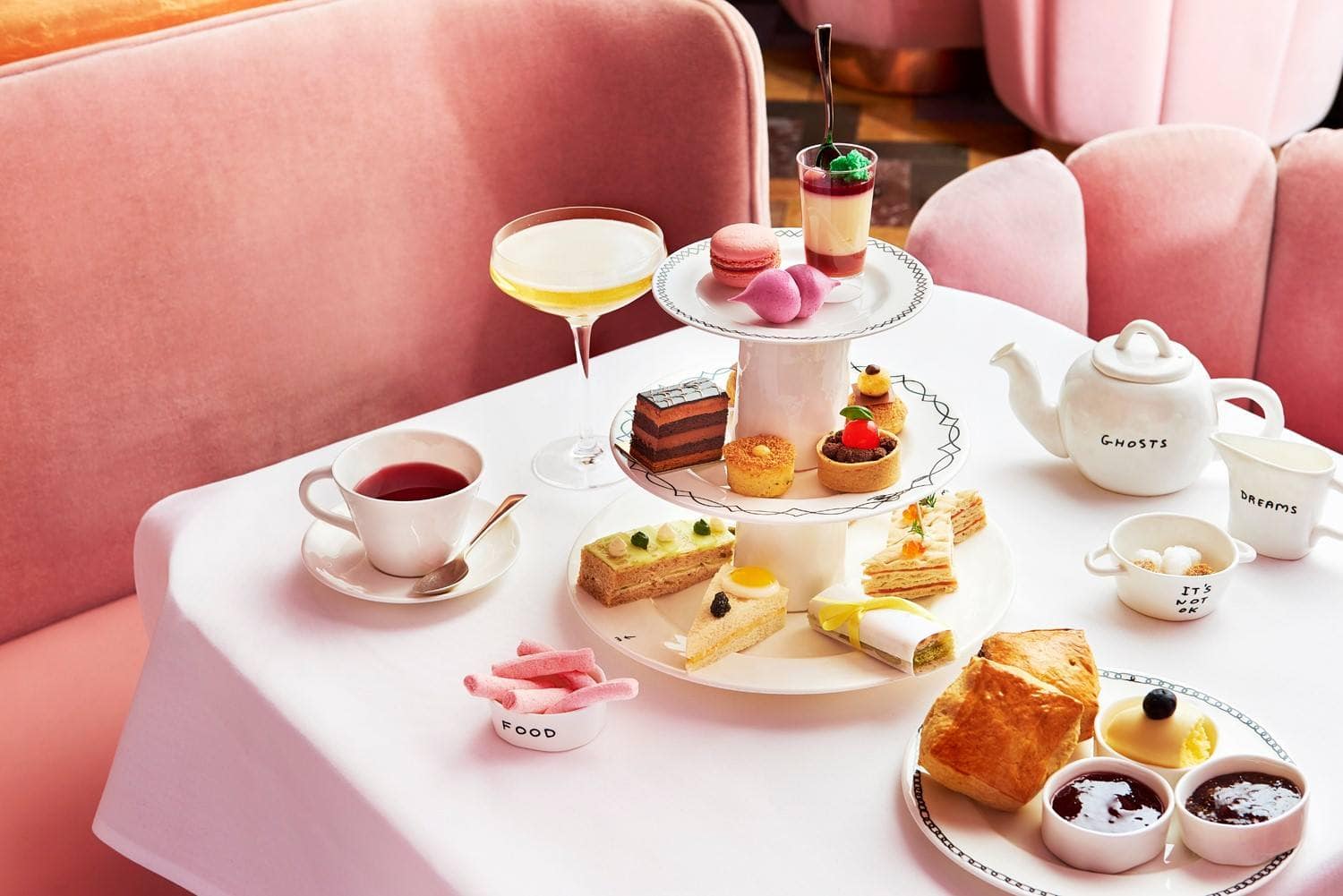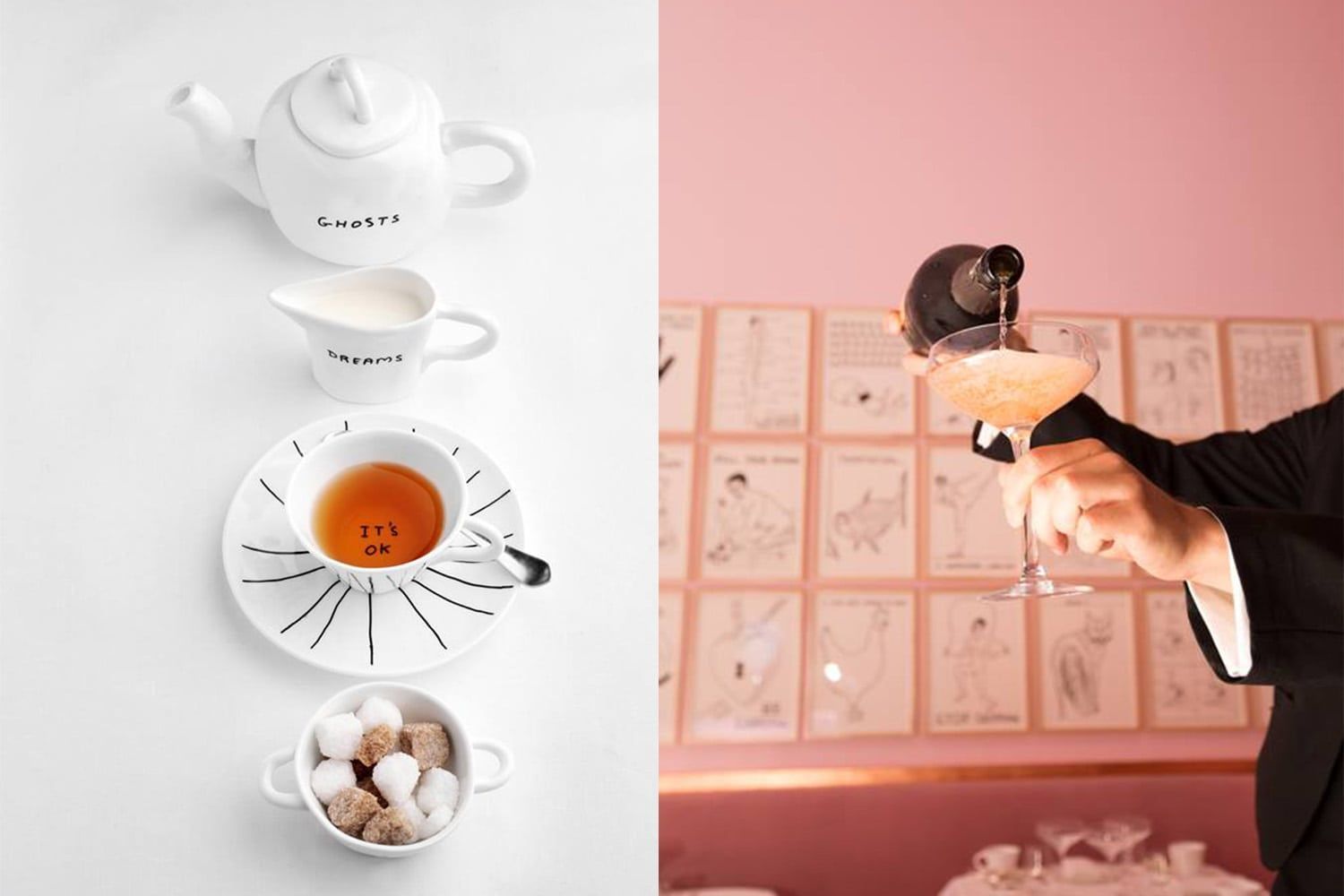
There’s no denying that a good old afternoon tea with the girls/guys/gang can spruce up your 3pm like Chinese jasmine buds unfurling into blossom in hot water. Afternoon tea has come a long way from its British origins, making its way across the globe to be enjoyed even in many spots across our beloved Bangkok, and is serving as a wonderful excuse to munch on cakes and sandwiches in the hangry lull between lunch and dinner.
Yet whilst the setup is cute and the variety is plenty, it’s not all fun and games between bites. There are official unofficial rules to this thing. There’s a way to smear your scone, there’s a certain rule to stirring your tea – rightfully, there’s even a proper procedure to wording the stirring to the tea you’re having.
Taking it back to what feels like a royal home for afternoon tea, we’ve put together the quintessential afternoon tea etiquette guide for all clueless sippers right here. Against the backdrop of images from one of our favourite afternoon teas at London’s Sketch, these pointers will surely impress at your next session, and ensure you really Downton Abbey your heart out at the tea table in style.
All the afternoon tea etiquette you’ll need:

First things first: know your afternoons from your highs
Before we get into the finer deets, it’s always good to know whether the afternoon tea you are consuming is in fact, afternoon tea. Whilst both hone regal monikers, afternoon tea and high tea are not the same thing, with the former traditionally referring to the three-tier-cake stand affair we know and love, and the latter referring to what servants of a large house normally ate for dinner time. Afternoon tea was a lighter meal, whilst high tea could include things like meat, whole big cakes, and even beer.
Especially in the UK, ‘afternoon tea’ may also simply be called ‘tea’. It is a given that the treat is sipped (never slurped) in the afternoon, and sits comfortably in the day between lunch and dinner (or supper). Afternoon tea is only afternoon tea if the table is set with a pot of leaf tea (teabags are a bit of a frowner) accompanied by a tea strainer, milk, sugar, sandwiches, cakes, and scones. It is served in a living room or lounge-style setting on a low table. Champagne is fabulous, but optional.

The thing with the cup holding
Second to the pronunciation of ‘scone’ (and we’ll get to that one in a second), the proper manner of holding a teacup has long been a discussion point when we talk about afternoon tea etiquette. The rule of thumb here is to cherish the thumb, and – no matter what you do – keep your pinkie finger down.
Thumb and index finger are to meet in the handle of your cup, whilst being supported by your middle finger. Never completely hook your finger through the handle – there’s a reason why Peter Pan’s Captain Hook never attended afternoon tea.
Nevertheless, bear in mind that the teacup is not the only fine china that requires fine attention on the table. Never lift your saucer from the table top, as this is considered rude. The teapot too must not be ignored, with particular attention given to its inaugural use.
Most commonly, one person at the table will be nominated as ‘pourer’, meaning that they are in charge of pouring a cup of tea for each attendant – one by one – and using the tea strainer to catch loose tea leaves in the process. Each cup is passed along to its recipient before pouring the next.
The thing with the tea drinking
Afternoon teas that include a glass of champers or a cocktail require that you sip on said champers or cocktail before you start drinking your tea. After all, nobody likes lost fizz in their bubbles, and every tea requires at least a few minutes for brewing. Consider it perfect timing.
When it comes to the tea, each individual tends to have their own beloved combination – be you a milk-pourer, lemon-squeezer, or three-sugar-cube-plumper. All these additions are normally added after the tea has been poured, and whilst there are no set rules to how much sugar or milk is appropriate, there is a set rule to stirring.
Tea is to be stirred back and forth; circular motions are reserved for pastry chefs in the kitchen. The correct way is to position the spoon at 6 o’clock, and gently ‘fold’ and stir in the opposite direction towards 12 o’clock.
Definitely do not allow your spoon to touch the sides of the teacup (the sound is an immediate gaffe), and always place your spoon next to your saucer when your stirring is complete. Always bring the cup up to your lips to drink, and avoid leaning in for it.
Take small sips, and never blow on hot tea to cool it. If brewed correctly, it should already be the perfect temperature. If not: more champers.

The right way to eat a scone (and the right way to pronounce ‘scone’)
Afternoon tea isn’t a Drake song, and so we need not start from the bottom. It is perfectly appropriate to pick a treat from the top tiers of the afternoon tea cake stand, working your way down to the finger sandwiches on the last level. The stars shine undeniably on the middle tier: the scones.
The overarching consensus is that there is no true consensus when it comes to the correct pronunciation of the word. For better or for worse, ‘skon’ rather than ‘scoan’ is the more fanciful way of saying the buttery cake name, and will bag you authoritative bragging rights at the table.
Scones are to be broken in half using the hand, and each half is eaten separately. Never let the mere thought of sandwiching them back together even cross your mind. Using a knife, smear each half with clotted cream first and then add jam on top (in true Devon style), or smear each half with jam first and then add clotted cream on top (in true Cornwall style). Either way works. Either way is entirely scrumptious.

And they’re called finger sandwiches for a reason
Whilst afternoon tea has some sort of prim and proper pomp to it, using your hands to eat isn’t a complete taboo.
As their name suggests, finger sandwiches are called finger sandwiches for a reason, and should be eaten with fingers and hands. The tea sandwiches are only legit if their crusts have been cut off, and are shaped in either triangles or rectangles.
Do not eat a single piece all in one go, but rather in bites and nibbles. Whilst there is a vast array of sandwich types, cucumber sandwiches are the most common staple, and knowing all this when you devour them ensures cool-as-cucumber points. (Don’t) lick your fingers, and consider yourself afternoon tea etiquette queen (or king).
This article first appeared on Lifestyle Asia Bangkok on 15 May 2019.
(Hero image credit: Claridges; other images: Sketch)
The post Your complete guide to afternoon tea etiquette appeared first on Lifestyle Asia Singapore.


